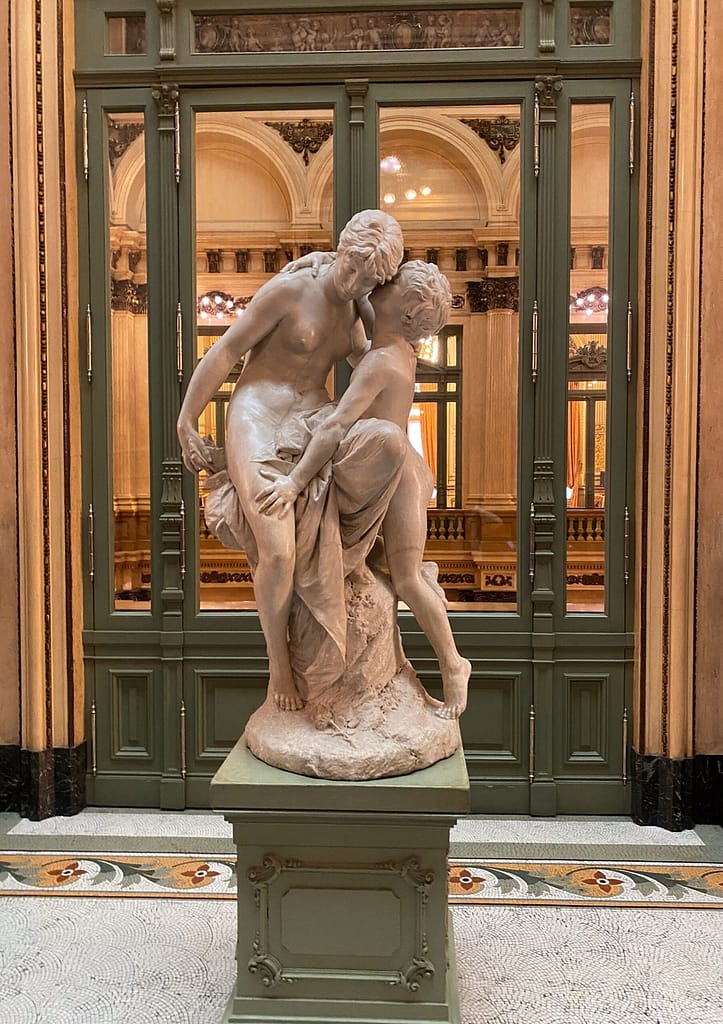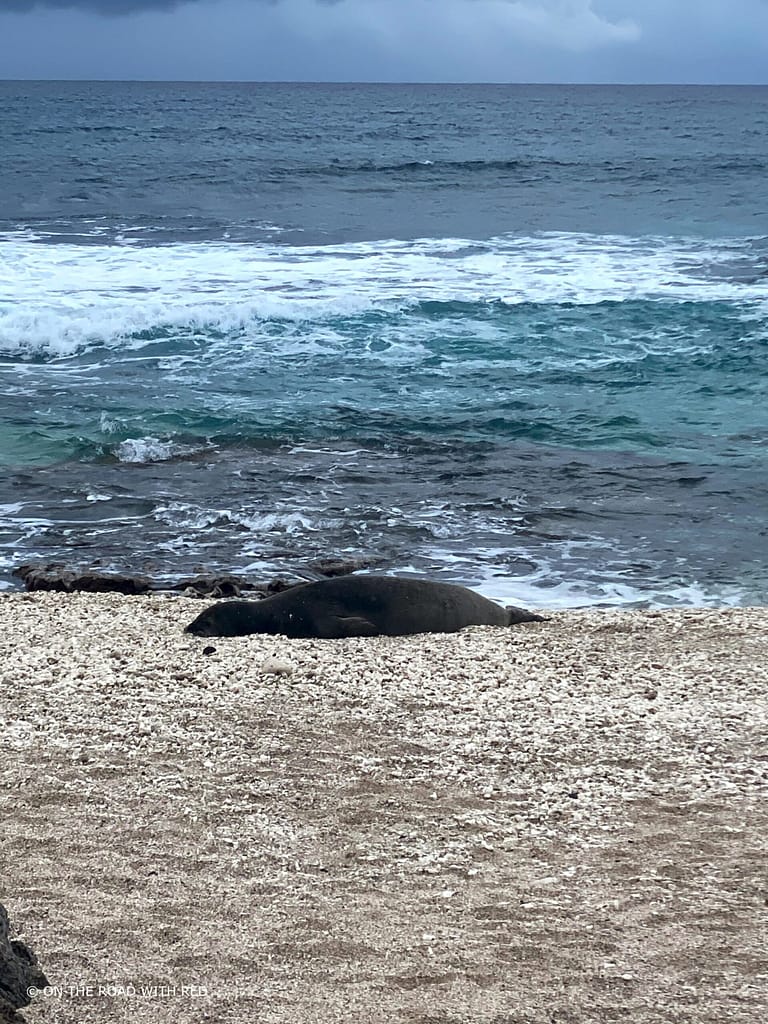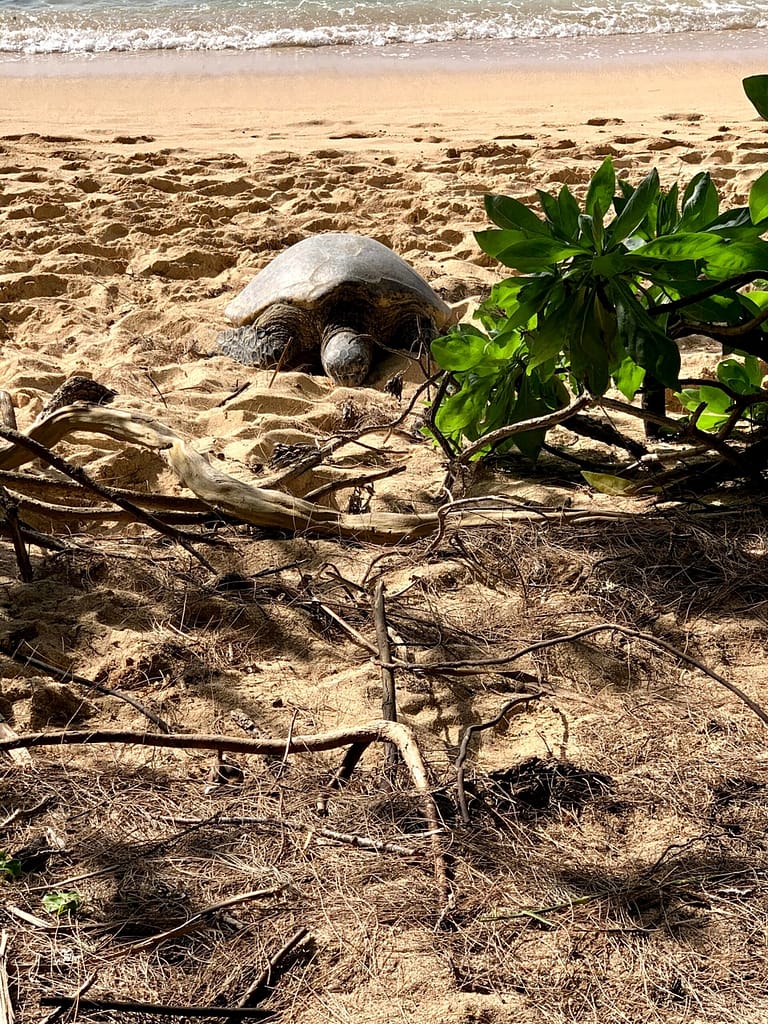
Teaching the Cultural Significance of Hawaii to Little Nomads
Cultural Education
Teaching the Cultural Significance of Hawaii to your children transcends beyond the aesthetic beauty. It’s about nurturing the seeds of respect, aloha, ohana, and environmental appreciation. As you plan your family’s voyage to this enchanting archipelago, here are key cultural elements to explore with your children. These are opportunities to make your Hawaiian adventure an enriching educational expedition in Teaching the Cultural Significance of Hawaii.
The Hawaiian Islands, often revered for their breathtaking vistas and tropical allure, are indeed a paradise. However, there’s an underlying essence that makes Hawaii more than just a beautiful getaway. The islands are a cultural epicenter, rich with age-old traditions, values, and a sacred bond with the land.
Embracing Aloha: The Heart of Hawaii
Aloha
Aloha, a quintessential Hawaiian term, is far more than a mere greeting. It’s the lifeblood of the islands, encapsulating love, peace, compassion, and a shared human experience. Teaching your children about Aloha is opening them to the essence of human kindness and goodwill.
Extend a warm “Aloha” to the locals you meet, explaining to your children that it’s not just a hello. It is also a spirit of graciousness and love. Encourage them to embody acts of kindness, empathy, and understanding during your visit. Allow them to experience the true spirit of Aloha.
The Shaka
The shaka, a simple yet iconic hand gesture, is deeply embedded in Hawaiian culture. It has become synonymous with the aloha spirit around the world. To form a shaka, one extends the thumb and little finger while holding the three middle fingers curled, and then lightly shakes the hand.
Traditionally, it conveys the “Aloha Spirit,” a concept of friendship, understanding, compassion, and solidarity among the various ethnic cultures that reside in Hawaii. The origins of the shaka are not definitively known. However, one popular story attributes it to a local Hawaiian named Hamana Kalili from Laie. The story says he lost three middle fingers in an accident, leaving only his thumb and little finger to wave.
The shaka has since become a symbol of Hawaiian culture. It’s also a way to convey the island’s laid-back lifestyle and hospitality. It’s used to express gratitude, solidarity, and a shared sense of identity. It has been widely adopted by surfers and others around the globe. Whether used in greeting, as a sign of approval, or just to express a carefree attitude, the shaka embodies the warmth and spirit of Hawaii.
Learning about Aloha was one of our first endeavors in world schooling. Our daughter started giving a shaka by the time she was three and she still does it for every picture. It doesn’t matter what country we are in. She embodies Aloha!

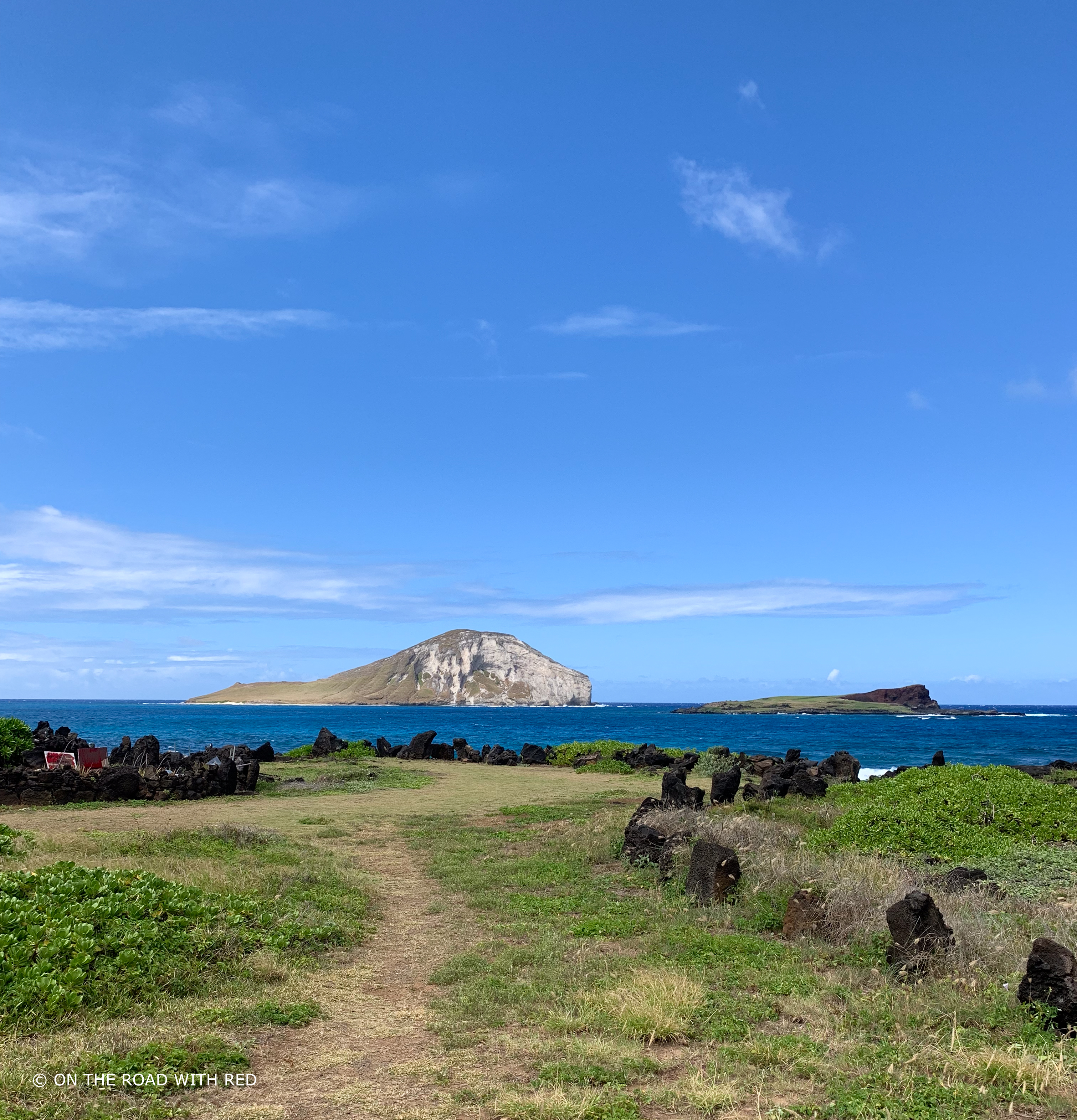
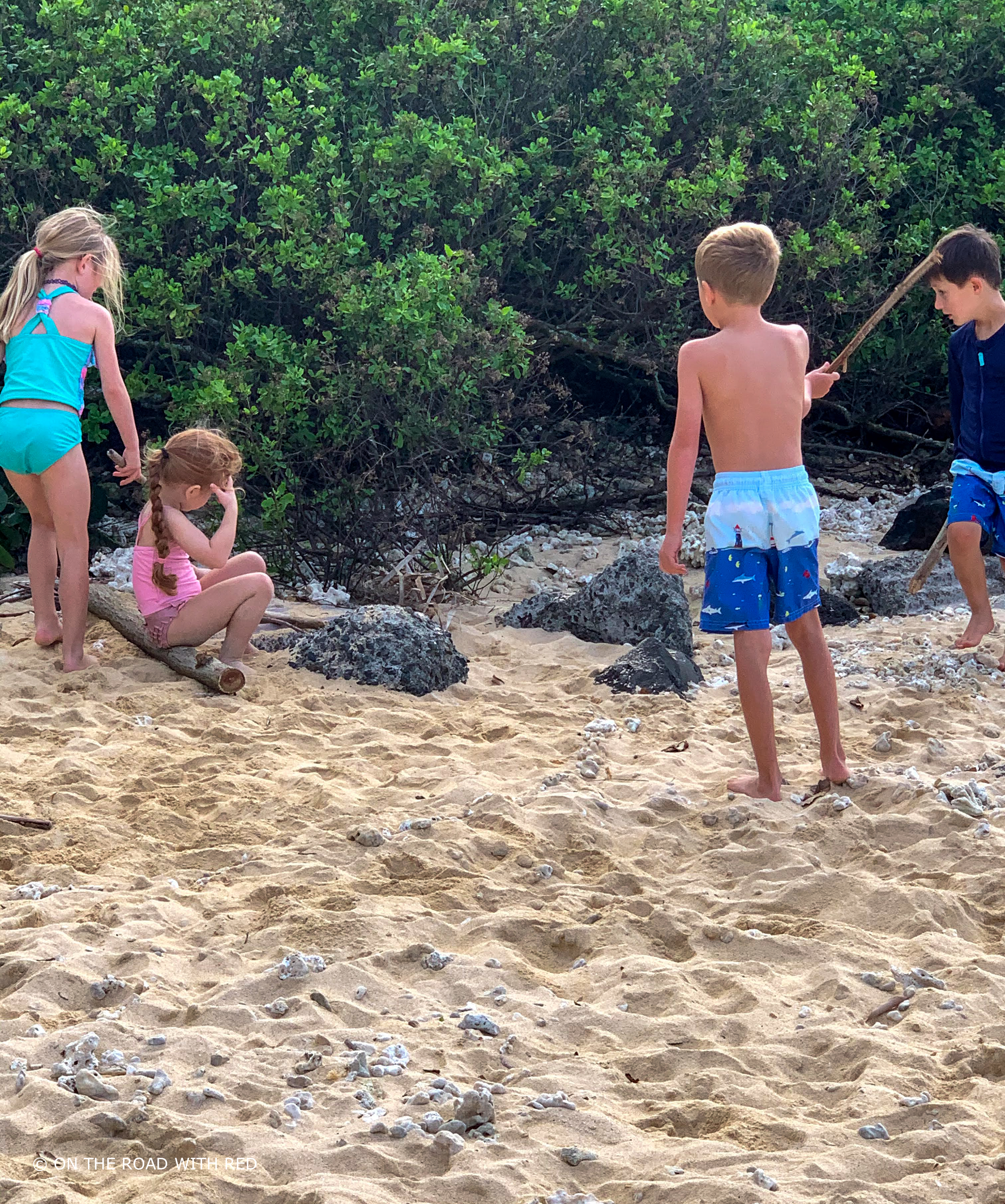
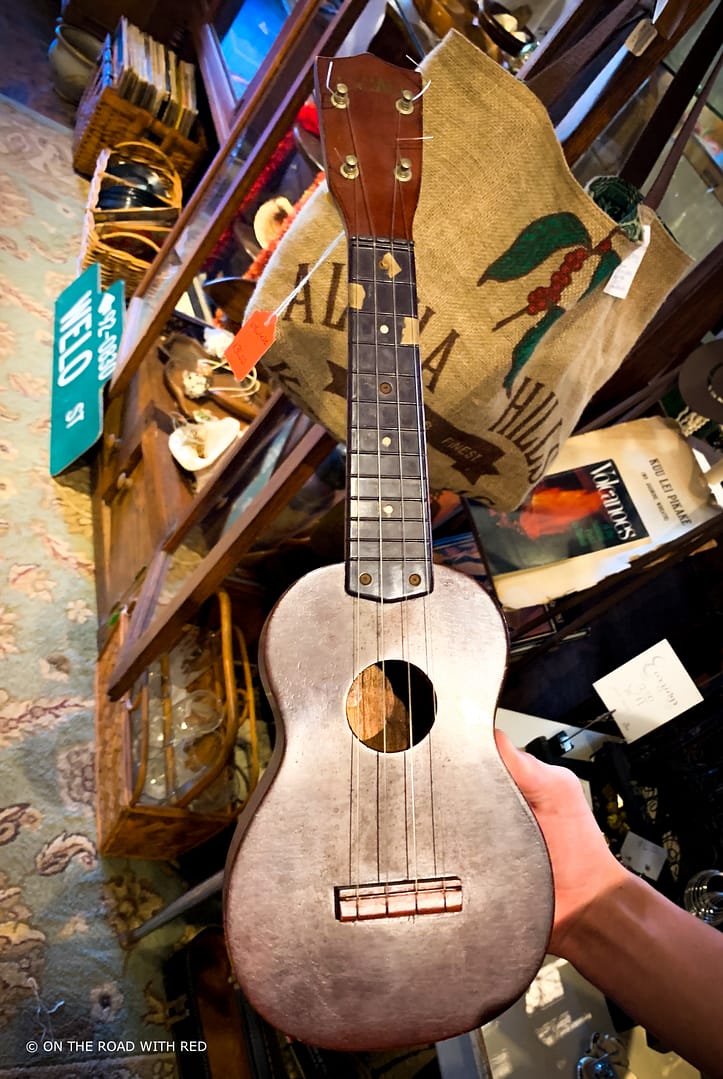

Ohana: The Backbone of Community in Hawaii
Teaching children about ‘Ohana, a Hawaiian term that extends beyond family to encompass community and connectedness, is a valuable lesson in unity and caring for each other. The concept of Ohana can be introduced through stories and activities that emphasize the importance of relationships, cooperation, and mutual respect. Engaging children in discussions about their own families, friends, and community members helps them understand the broader meaning of Ohana.
Activities such as family tree projects, community service, or participating in local cultural events can reinforce these lessons. Books and online resources that focus on Hawaiian culture and the significance of Ohana offer a deeper insight into this concept. For instance, websites like the Bishop Museum or Hawaii’s Plantation Village provide educational materials and stories that bring the spirit of Ohana to life.
Additionally, animated films and children’s books that depict Hawaiian culture can be fun and engaging ways to introduce the concept. By teaching children about Ohana, we instill values of inclusivity and responsibility towards others. Also, the understanding that everyone plays a role in the well-being of the community. Thus fostering a sense of belonging and care for one another.
Delving into Hawaiian Traditions: A Colorful Learning Curve
Hawaiian traditions are an important part of the island’s heritage. Teaching children about Hawaiian traditions can be both engaging and educational. A great way to start is by introducing them about hula dancing, lei-making, and luaus. These are not just fun but are full of cultural significance. Local cultural centers or Hawaiian festivals often offer hula workshops for children.
Another key tradition is the art of lei making, which symbolizes welcome and friendship. You can find online tutorials or community classes that teach the basics of lei-making. Any of these activities is a stepping stone towards a deeper appreciation of Hawaiian culture.
For a deeper dive into Hawaiian culture, the Bishop Museum‘s website offers a wealth of resources on Hawaiian history, art, and traditions. Additionally, reading Hawaiian legends and myths with children can be a captivating way to teach them about the island’s folklore. By exploring these specific aspects of Hawaiian culture, children can gain a genuine appreciation for the traditions and history of Hawaii.
Malama Aina: Teaching Respect for the Land
Teaching children about Mālama ‘Āina, a Hawaiian concept of caring for and respecting the land, is an important aspect of instilling environmental stewardship. This concept can be introduced through activities that highlight the importance of nature and our responsibility to protect it.
Discuss the ethos of Malama Aina with your children. Emphasize the importance of preserving natural habitats, responsible disposal of trash, and the ‘leave no trace’ ethos while exploring. Engage in eco-friendly activities like hiking, beach cleanups, and world schooling educational tours. These instill a sense of environmental responsibility and appreciation.
Engaging children in gardening, whether at home or in a community garden, demonstrates the principles of nurturing the land. Participating in local beach cleanups or nature walks can also illustrate the importance of caring for our environment. For a more in-depth understanding, the Hawaii Environmental Education Alliance website offers resources and programs specifically designed to teach children about Mālama ‘Āina. Another great resource is the Kupu Hawaii website. It provides educational materials and volunteer opportunities focused on environmental preservation in Hawaii.
By involving children in these practical experiences and providing them with educational resources, they can learn the value of Mālama ‘Āina, fostering lifelong respect and care for the land and environment.
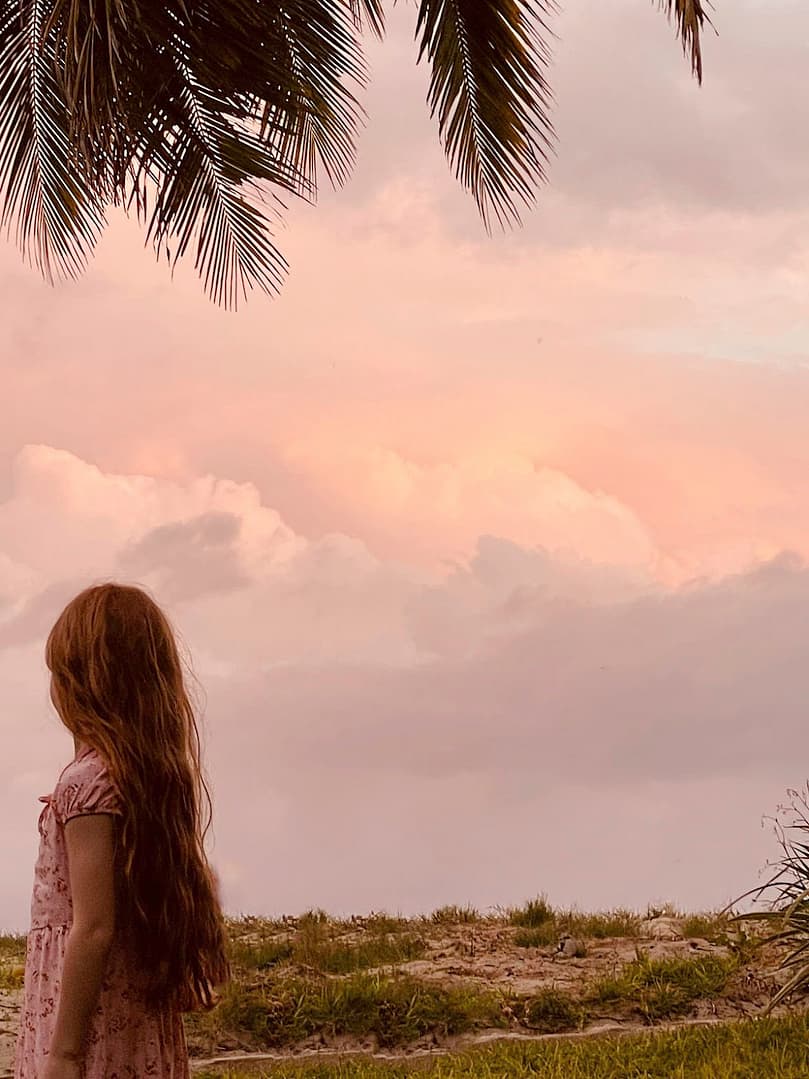



Navigating through Native Hawaiian History and Legends
The history and legends of the Hawaiian Islands are as vast and deep as the Pacific waters that surround them. Take your children on a journey back in time by visiting cultural sites like ancient heiaus (temples). Share the enthralling stories of Hawaiian monarchs and the island’s past.
Stimulate their curiosity by encouraging questions and seeking knowledge about the rich heritage of the islands. Thus nurturing a profound respect and understanding of Hawaii’s historical tapestry. Cultural education is all around us.
Teaching children about Native Hawaiian myths and legends opens a world of rich storytelling, filled with captivating tales of gods, heroes, and the natural world.
Pele
One famous legend is that of Pele, the goddess of volcanoes and fire, known for her fiery temper and the creation of the Hawaiian Islands. Stories of Maui, a mischievous demigod known for his strength and cleverness, are also popular among children. He is famed for his exploits like slowing down the sun to lengthen the day. The tale of Naupaka, a tragic love story, explains the unique half-flower found in Hawaii, symbolizing separated lovers. Another interesting legend is that of the Menehune, mythical small-sized people skilled in engineering who are said to have built temples, fishponds, and roads overnight.
The Night Marchers
The Night Marchers, or “Huaka’i Pō” in Hawaiian, are a fascinating and eerie part of Hawaii’s rich folklore. According to legend, Night Marchers are the ghostly apparitions of ancient Hawaiian warriors. They are said to roam the islands at night, particularly on sacred paths leading to or from battle sites or other significant places.
These spirits are believed to be eternally duty-bound to protect certain sacred areas and are often seen carrying torches and weapons, accompanied by the sounds of drums and conch shells. It’s said that encountering the Night Marchers can be ominous, and locals adhere to specific protocols if they find themselves near a Night Marcher path. The most important rule is to never interrupt their march or make eye contact, as this is considered disrespectful and may bring misfortune. Instead, one should lie down quietly and avoid notice.
The tales of the Night Marchers not only serve as a spine-tingling ghost story but also reflect the deep respect for history, tradition, and the supernatural that is woven into the cultural fabric of Hawaii.
Books
Books like “Legends of Maui – A Demi-God of Polynesia and of His Mother Hina” by W.D. Westervelt provide a detailed collection of these tales. Websites such as the Bishop Museum and Hawaii State Public Library System offer not just the stories themselves but also the cultural context and historical significance behind them. Through these myths and legends, children not only enjoy fascinating stories but also learn about the beliefs, natural phenomena, and historical narratives of Hawaii, deepening their understanding and appreciation of Hawaiian culture.
‘Olelo Hawai’i: Bridging Communication through Language
‘Olelo Hawai’i, the Hawaiian language, plays a vital role in bridging communication and preserving the rich cultural heritage of Hawaii. Educating children in ‘Olelo Hawai’i not only fosters a deeper connection to Hawaiian culture but also promotes linguistic diversity and understanding.
Various resources are available for teaching this beautiful language to children. The ‘Aha Pūnana Leo organization offers language immersion preschools, therefore a unique opportunity for young learners to be immersed in ‘Olelo Hawai’i from an early age. Online platforms like Kamehameha Publishing provide educational materials, including books and interactive learning tools, suitable for children learning ‘Olelo Hawai’i.
Additionally, apps like Duolingo have recently introduced ‘Olelo Hawai’i, making language learning accessible to a wider audience. By engaging with these resources, children can learn more than a language. Thus gaining insights into the values, traditions, and history of Hawaii, helping to keep the Hawaiian language and culture alive and vibrant for future generations.
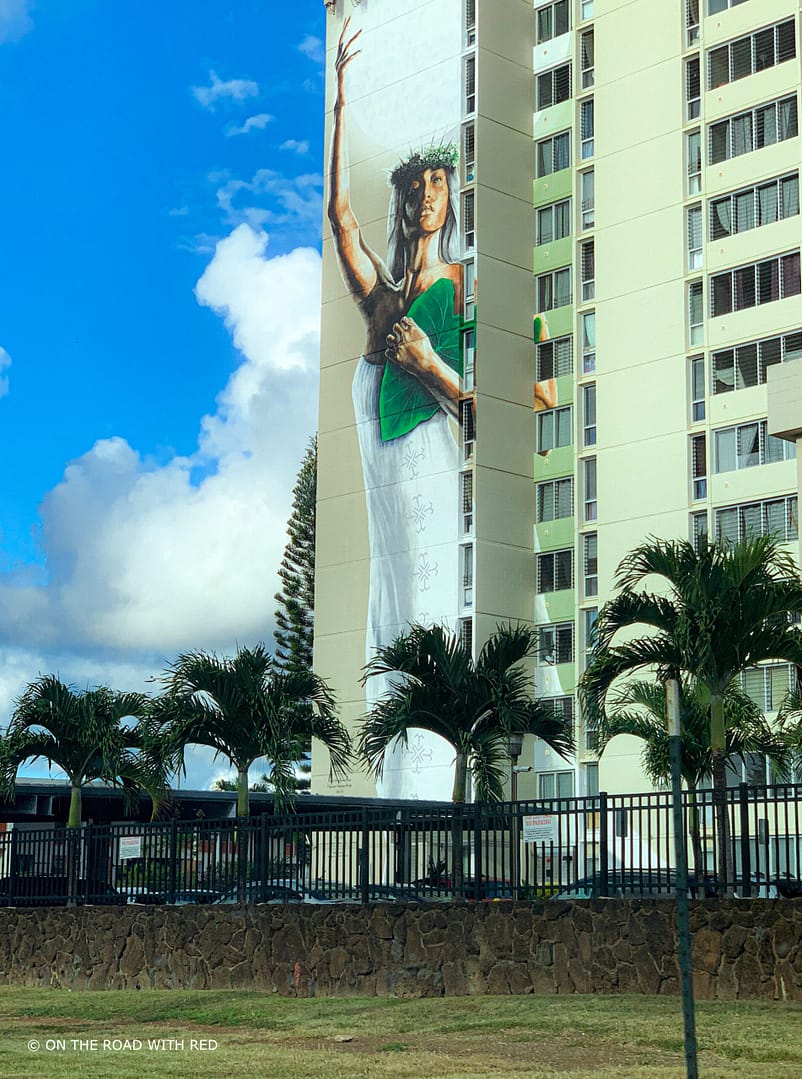
Joining the Festive Spirit: Cultural Events and Festivals in Hawaii
Hawaii is rich in cultural events and festivals that offer a vibrant glimpse into its traditions. These events are perfect for teaching and immersing in Hawaiian culture. The Merrie Monarch Festival, a week-long celebration of hula and Hawaiian arts, is a highlight. Children can watch hula performances, understanding their history and significance.
The Aloha Festivals showcase Hawaiian music, dance, and history. Families can attend parades and street parties. The Lantern Floating Hawaii ceremony is a beautiful event for honoring loved ones and promoting peace. Participating in these events helps children learn about respect, community, and Hawaiian values.
Local food festivals introduce Hawaiian cuisine, teaching about traditional foods and their preparation. Lei Day celebrations on May 1st are great for learning lei-making. Many of these festivals have interactive workshops and activities for children.
By attending and participating in these festivals, children experience Hawaiian culture firsthand. They learn through joy and engagement. This is a great way to assist in Teaching the Cultural Significance of Hawaii.
Pioneering Sustainable Practices: Lessons from Hawaii
Hawaii’s unique ecosystem is a delicate treasure. Teaching your children about sustainability and the importance of conservation is not just a lesson in environmental responsibility, but also a tribute to Hawaiian cultural values. Discuss the challenges faced in protecting endangered species like the Hawaiian green sea turtle (honu) and the Hawaiian monk seal (ilio holo i ka uaua). Adopt eco-friendly practices like conserving water, reducing plastic usage, and supporting sustainable tourism, laying the foundation for a lifetime of environmental stewardship. These are great resources for world schooling education.
In conclusion, teaching our little nomads about the cultural significance of Hawaii has been an enriching journey that extends far beyond just seeing new places. It’s about understanding and respecting a culture that is vibrant, rich, and deeply connected to its land and traditions.
Through hands-on experiences, storytelling, and participating in local events, we’ve not only introduced our daughter to the beautiful customs of Hawaii, but we’ve also instilled in her a deep appreciation for diverse cultures and histories. This adventure in cultural education has been as much a learning experience for us as it has been for her, reminding us that travel is not just about landscapes and landmarks, but also about the people and their heritage.
As we continue our travels, we carry with us the spirit of aloha, the respect for ‘āina, and the understanding that every place has a story worth learning. Join us as we explore more cultures, each with its unique lessons and experiences, on “On the Road with Red.”
Last Updated on December 8, 2023 by On the Road with Red


